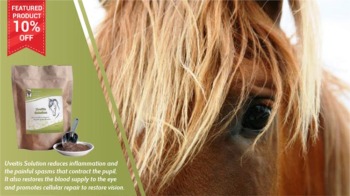IR – Insulin Resistance: What is it really?
By Joseph Thomas, PhD
Printed in: Natural Horse
Volume 8, Issue 5
 Insulin Resistance (IR) is a commonly used and poorly understood term. Mostly, horse people associate it with “hard, cresty necks,” fat deposits on the rump and shoulders, excess weight, Cushing’s syndrome, and the threat of a laminitic episode. Past these external signs and symptoms though, what is it really?
Insulin Resistance (IR) is a commonly used and poorly understood term. Mostly, horse people associate it with “hard, cresty necks,” fat deposits on the rump and shoulders, excess weight, Cushing’s syndrome, and the threat of a laminitic episode. Past these external signs and symptoms though, what is it really?
The concept of Insulin Resistance was first introduced in 1939 as a way to explain why cells become increasingly unable to use glucose in “diabetes mellitus” [Type 2 diabetes]. Cells need to consume glucose to survive and insulin provides the “push” for glucose to be “taken up” by cells. But, researchers found that in Type 2 diabetes, cells are less capable of taking up the glucose they need and that this inability is related to a decrease in insulin’s ability to “push” glucose into the cells. So the term “Insulin Resistance”, now commonly called just IR, was coined to describe the notion that in Type 2 diabetes there is a “resistance” to insulin mediated glucose utilization. Insulin resistance has been studied intensively in human research over the last seventy years and it is now understood to be the root of the metabolic syndrome that frequently results in Type 2 diabetes.
Equine research has demonstrated that the IR process is identical in horses except that they have the additional consequence of laminitis. Insulin resistance in both humans and horses starts the metabolic syndrome course and it is considered to be the root of the disease process; in horses this process is generally referred to as the Equine Metabolic syndrome (EMS). It is widely accepted in human research that IR and the metabolic syndrome are genetically determined and this is becoming increasingly more accepted in the equine research world. Understanding that IR is genetically activated explains why it so often cannot be controlled just by diet and exercise.
It is important to understand that Insulin resistance is an interactive process that escalates. Basically, this is how it works. Once insulin resistance starts, the horse’s body attempts to compensate for the cells becoming less “sensitive” to insulin’s action by increasing the amount of insulin produced. Insulin is secreted from the beta-cells of the pancreas. When IR begins these beta-cells are called on to secrete increasingly more insulin to make up for the resistance and get the needed glucose into the cells.
This compensation in the insulin secretion level by the beta-cells occurs so that the glucose level in the blood is maintained within the “normal” range. The assumption is that if the blood glucose level is “normal” then the appropriate quantity of glucose is entering the cells.
The problem is that even though the glucose level is considered normal the horse’s physiology, i.e. the beta-cells of the pancreas, is now at a place where it takes a much higher concentration of insulin in the blood to push the same amount of glucose into a cell. At this point a horse will be diagnosed as having “compensatory hyperinsulinemia” (high blood insulin levels) and the risk of laminitis begins.
Some of these IR horses are going to reach a place where their pancreatic beta-cells become exhausted and can no longer maintain the necessary “drive” to keep glucose within “normal” limits. For these horses glucose becomes elevated in the blood and they can then be diagnosed as having Type 2 diabetes with the classical definition of elevated blood glucose levels. If blood glucose levels are high, i.e. above normal concentration, then the glucose available for cellular use is deficient and inadequate to meet the needs for their health. Every increase in the severity of insulin resistance and compensatory changes in organ function brings a greater risk for laminitis and associated pathologies.
The familiar signs and symptoms of a horse at risk for laminitis; “hard, cresty neck” and fat deposits on the rump and shoulders stem from this internal process. Once Insulin Resistance has begun, the consequences of the metabolic syndrome that is set in place includes not only the increased risk of laminitis but also decreased immune function, vascular issues, a variety of categories of anemia, and gastrointestinal problems.
Obese horses have IR and contrary to popular opinion non-obese horses also have IR; the external signs and symptoms are merely an “outside” expression of the progressing underlying disease process. “Proper” diet and exercise are necessary for these horses, just like it is for people with the metabolic syndrome and diabetes but, diet and exercise will not reverse the course of this disease. Good/healthy care and management practices are an important part of decreasing the “trigger” aspect of an acute laminitic episode but are not always enough to prevent these damaging and painful experiences from occurring.
Laminitis is a consequence of the above described disease process and not the disease itself. You may well be able to recover the damaged hoof, and you should, but if you don’t effectively treat the root issue of insulin resistance leading to the Equine Metabolic Syndrome [EMS] your horse will have another laminitic episode.
Joseph Thomas, Ph.D. © 2008. All Rights Reserved.









